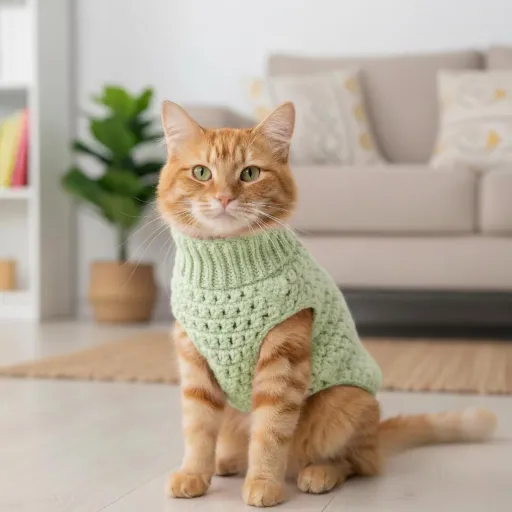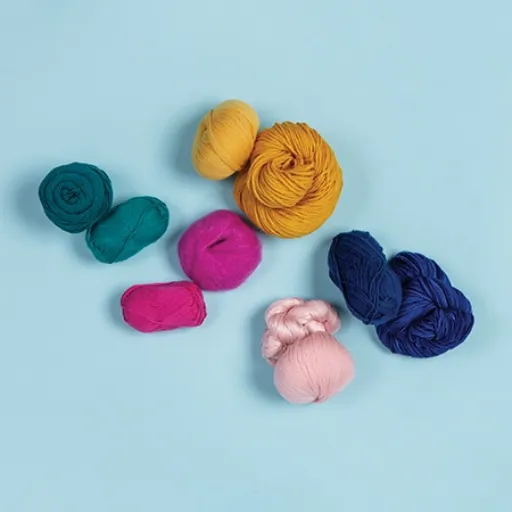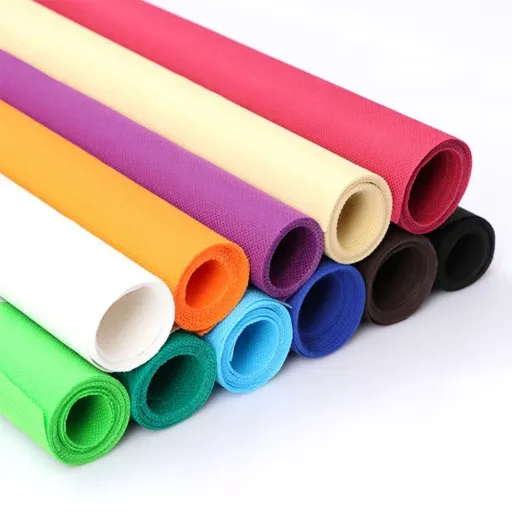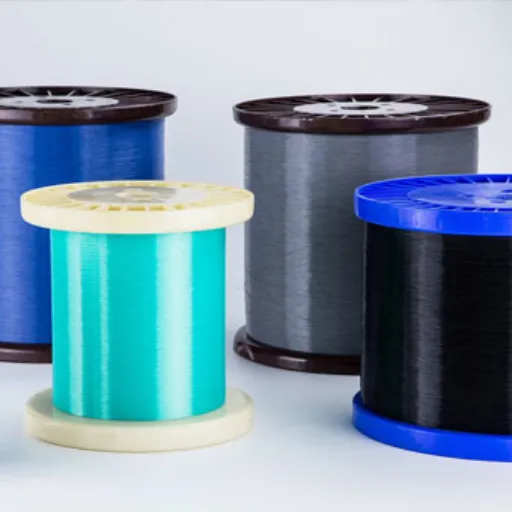One of the most versatile fiber types, viscose is highly sought after in the textile trade for its beautifully smooth finish and exceptional adaptability. What then is viscose fiber, and how does one make viscose fabric? This blog is a beautiful portal that delves into the world of viscose, tracing the source and production of this material to the very reason it is found in almost every aspect of human life, from everyday clothes to the most stylish furnishings. Whether you are a fashionista who focuses on sustainable materials or one who is genuinely intrigued by fabric science, this article will give you a complete overview and will answer some of the most commonly asked questions about viscose. Prepare to be immersed in the journey of this beautiful fabric and its influence on modern life!
Understanding Viscose
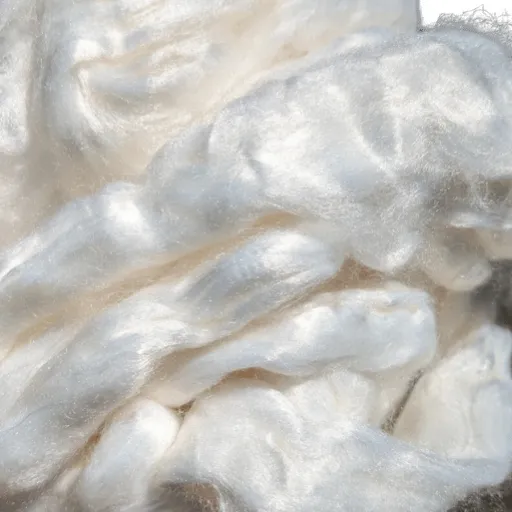
Viscose is a semi-synthetic fiber composed of cellulose, a natural ingredient in wood pulp. Viscose is prepared with various chemical processes, converting raw cellulose into functional and durable fabrics. Once perceived as silky, the fiber can be used in clothing, upholstery, and textiles, providing soft finishes; however, it also allows for breathability and easily takes on vibrant colors. The production of viscose involves chemicals, therefore raising environmental concerns. Now, modern methods are increasingly focusing on addressing these concerns; thus, discussing viscose in relation to sustainable fabrics is becoming a common practice.
History of Viscose Fabric
The origin of viscose dates back to the late 19th century, when it became an affordable alternative to silk. The first viscose process was invented in 1892 by Charles Frederick Cross, Edward John Bevan, and Clayton Beadle, who had the patent for the process. In the original method, cellulose, typically derived from wood pulp, was chemically treated to produce a solution from which fibers could be spun.
The viscose name is derived from the viscous solution that occurs during this method. In the early 20th century, factories were built to produce viscose on a large scale, and the industry soon became captivated by it for use in clothing and textiles. Technological enhancements have since brought up-to-date methods that now produce with greater efficiency and concern for the environment. The fabric remains among the most versatile and sought-after today, valued for both its utility and beauty.
Characteristics of Viscose
✓ Positive Characteristics
- Soft and silky feel: Often compared to natural fibers like cotton and silk
- Breathable: Allows air circulation and moisture management
- Excellent dye absorption: Takes bright colors that last for a long time
- Versatile design options: Suitable for various textile applications
- Affordable luxury: Intersection of luxury feel and cost-effectiveness
⚠ Considerations
- Shrinkage tendency: Prone to shrinking if not handled properly
- Wet strength reduction: May lose strength when wet
- Care requirements: Needs careful handling during washing and drying
Production Process of Viscose
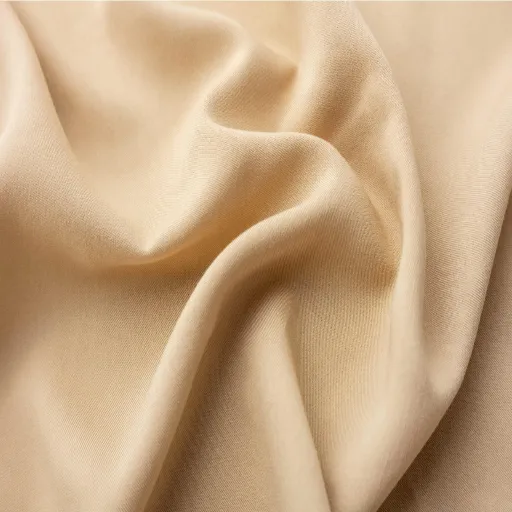
The viscose production process is a complex set of steps in which raw materials are transformed into one of the most versatile fabrics. The process begins with cellulose, which is typically obtained from wood pulp, and is treated with a chemical, such as sodium hydroxide, to convert it into alkali cellulose.
This is aged before being treated with carbon disulfide to give a dissolved solution known as viscose. The viscose solution is filtered and extruded into fibers by passing it through fine nozzles into a chemical bath that causes it to set. These fibers are then washed, bleached, and dried to produce the finished material for textile manufacture. This procedure imparts the fabric’s characteristic softness, sheen, and versatility.
| Step | Process | Purpose |
|---|---|---|
| 1 | Cellulose Treatment | Convert cellulose to alkali cellulose using sodium hydroxide |
| 2 | Aging Process | Allow chemical reactions to complete |
| 3 | Carbon Disulfide Treatment | Create a viscose solution |
| 4 | Filtration & Extrusion | Form fibers through fine nozzles |
| 5 | Finishing | Wash, bleach, and dry for the final product |
Raw Material: Cellulose Extraction
Cellulose is primarily obtained from plant-based materials, with wood pulp and cotton being the most common. The extraction process begins by harvesting the raw plant matter, which undergoes either mechanical or chemical treatment to release the cellulose fibers. For instance, wood pulp is subjected to processes such as pulping and bleaching to remove unwanted components, including lignin and hemicellulose, thereby retaining almost pure cellulose. This step is crucial in producing good-quality fibers suitable for textiles. The selection of raw materials and extraction procedures is a significant concern when trying to maintain sustainable and affordable fabrics.
Challenges in Viscose Manufacturing
One of the main problems in producing viscose is environmental pollution during the production process. The chemicals used, such as carbon disulfide (CS2) and sodium hydroxide (NaOH), are hazardous both to the workers who risk their lives in production and to the environment that will suffer if waste is not disposed of properly.
Additionally, the massive consumption of water and energy would amplify the production footprint of viscose, thereby making it less sustainable compared to newer, eco-friendly options. Another significant issue is the procurement of raw materials from sustainable sources, such as certified wood pulp, as problems with illegal logging and deforestation often hinder the supply chain.
These barriers have prompted the industry to think outside the box in terms of closed-loop manufacturing, greener solvents, and other approaches that may help reduce environmental and social footprints while remaining cost-efficient.
Properties and Benefits of Viscose
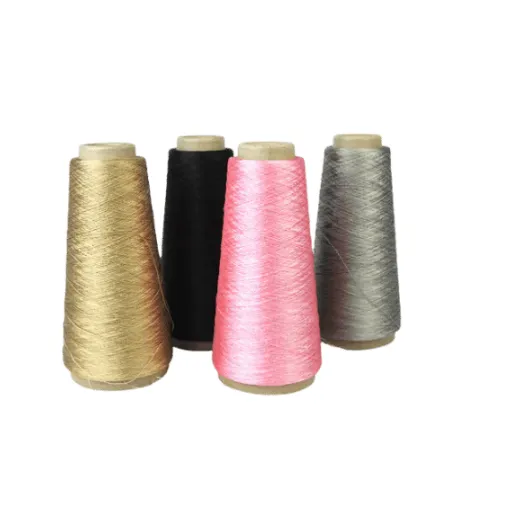
Viscose has several desirable properties and finds numerous applications in various areas. It is soft, lightweight, and breathable, making it comfortable with other natural fibers, such as cotton. It is also a highly absorbent medicine for use in garments and home textiles. It drapes well and retains its colors, making it a stylish and attractive fashion choice. These facilities, coupled with an affordable price, give it an advantage for practical use anywhere.
Softness and Comfort of Viscose
Introducing the picture of viscose in famous embroidery: having the ability to recreate the softness and comfort of nature, that is, cotton and silk, at a cost. The soft finish on the skin makes it the perfect choice for sensitive skin, ensuring comfort throughout the day. Consumer preferences are ever-shifting, with the latest reports revealing that clothing made from viscose fabric is favored for its lightweight nature and sumptuous draping, thereby solidifying its position as a preferred fabric for both casual and formal wear. Being a worthy combination of comfort and utility, linen tops the list for all sorts of fashion needs.
Versatility of Viscose in Fashion
Research shows that a search inquiry on the Internet about why viscose is so hugely adored in modern fashion. Search trends obtained from the web indicate that consumers often look up queries such as “sustainable viscose fabric” or “viscose dress styles,” which suggests an accumulation of people interested in both the environmental impact and usage of the fabric. Viscose can replicate the appearance and texture of natural fabrics, such as silk or cotton, at significantly more attractive prices. Designers place the fabric in situations ranging from flowy summer dresses to tight-fitting suits, diametrically opposite examples that cater to different fashion tastes. This versatility, combined with bargain pricing and now the eco-friendly options such as responsibly sourced viscose, has retained its position as a wardrobe staple in today’s times.
Environmental Considerations of Viscose
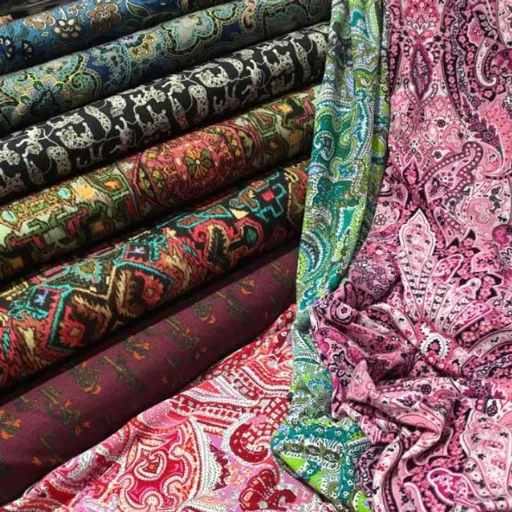
Environmental Challenges
Atmospheric pollution and environmental changes brought about by viscose are usually the result of highly hazardous, chemical-laden processes. Factories use chemicals like carbon disulfide, which ultimately affect the health of workers and the environment. Additionally, if not properly managed, the sourcing of wood pulp for viscose may lead to deforestation. However, advances in implementing closed-loop processes and utilizing certified sustainable woods are helping to mitigate these consequences. Environmental considerations can be alleviated by choosing viscose from environmentally conscious manufacturers.
Positive Environmental Aspects
When produced sustainably, viscose production offers numerous environmental and economic benefits. One of the key advantages is its biodegradability, which makes it more environmentally friendly than synthetic fibers such as polyester. Viscose is derived from natural, renewable resources, primarily wood pulp, and serves as a substitute for the luxurious feel of silk or the comfort of cotton.
With advancements in technology, there have also been improvements in closed-loop processes, which significantly reduce waste and the emission of chemicals harmful to the environment. The use of certified wood, such as FSC or PEFC, extends its positive impact. On the economic side, viscose production is an industry that provides jobs and income for communities, particularly in areas where fiber manufacturing makes a significant contribution to the local economy.
It is these sorts of things that combine to give viscose a great deal of versatility and viability as a fiber when produced responsibly.
Sustainability Efforts in Viscose Manufacturing
The goal of sustainability in viscose manufacturing is to lessen the environmental impact of production processes and promote the responsible sourcing of raw materials. Leading manufacturers have adopted closed-loop production systems to recover and reuse water and chemical inputs, thereby minimizing waste and pollution.
Additionally, initiatives are working toward making alternative feedstocks a reality, such as utilizing agricultural residues or recycled textiles, to reduce reliance on wood pulp and deforestation. FSC and PEFC certification ensure that the materials used in production adhere to sustainable forest practices, thereby supporting healthy and protected forest ecosystems.
Stakeholder collaboration and industry pledges through bodies like the Sustainable Apparel Coalition and the CanopyStyle Initiative also expedite development and provide a level of monitoring for increased transparency and traceability in the viscose supply chain. The way forward in creating long-term sustainability for the viscose sector lies in the synergy of responsible manufacturing practices and improved technology.
Applications of Viscose in Industry
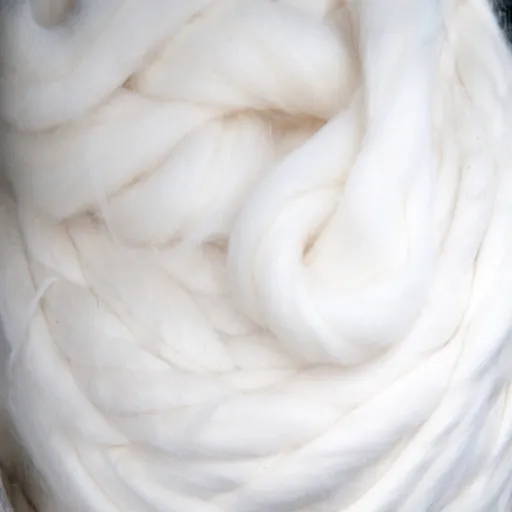
This is a versatile fiber capable of performing a wide variety of tasks. In the textile industry, viscose remains one of the premier methods for transporting garments and home furnishings because it is soft, breathable, and smooth to the touch, much like natural fibers such as cotton or silk. Beyond the textile industry, it finds applications in wipe manufacturing, hygienic products, and industrial applications, such as tire cords, where strength and flexibility are essential. Such versatility holds it in constant demand from mundane consumer-use products to highly technical industrial applications.
Fashion Industry Uses of Viscose
Viscose remains a crucial element for the fashion industry due to its flexibility, economical pricing, and ability to emulate the luxurious characteristics of natural fibers. Light and airy, it is perfect for summer attire, such as dresses, blouses, and skirts. Sometimes, viscose is mixed with polyester, cotton, or even elastane to enhance strength and performance. Recent trends in search have indicated a growing interest in sustainability, thus causing increased demand for eco-conscious viscose made from responsibly sourced wood pulp. Fast forward, brands also leverage viscose for its ability to take intense colors to create eye-catching, bold, and bright patterns. This versatility keeps viscose at the forefront of textile innovation, serving both style-conscious and sustainability-conscious markets.
Home Textiles Made from Viscose
When it comes to home textiles, viscose is an excellent option due to its softness, breathability, and adaptability. I love how it adds a touch of luxury to everyday items like bed sheets, curtains, and cushion covers while being ecologically friendly when produced correctly.
Reference Sources
Here are four professional and authoritative sources that provide information about viscose fiber:
- Wikipedia – Rayon: A thorough rundown on rayon (or viscose), including its composition and its production.
- Sewport – What is Viscose Fabric: Deep into the details about viscose fabric, its properties, and how it is made.
- Good On You – Material Guide: Viscose and Sustainability: Talks about where viscose comes from, sustainability, and the environmental impact.
- Textile Exchange – Viscose: Examines viscose from the perspective of one of the most common man-made cellulosic fibers, exploring its uses and characteristics.
Frequently Asked Questions (FAQs)
❓ What is viscose fiber?
Viscose fiber, often referred to as rayon, is a semi-synthetic material made from regenerated cellulose. It is derived from natural sources, primarily wood pulp, and is known for its silk-like feel and versatility in clothing and textiles.
❓ How is viscose made?
Viscose is made through a process that involves dissolving cellulose from wood pulp to create a viscous solution. This solution is then extruded through spinnerets to form fibers, which are later spun into yarn and woven or knitted into fabric.
❓ What are the different types of rayon?
There are several types of rayon, including conventional viscose, modal rayon, and lyocell. Each type has distinct properties and production methods, but all are derived from cellulose and share similar uses in textiles.
❓ Is viscose environmentally friendly?
Viscose is more environmentally friendly compared to many synthetic fabrics, as it is made from natural wood pulp. However, the production process can involve significant air emissions and chemical use, which raises concerns about its overall sustainability.
❓ What are the advantages of using viscose clothing?
Viscose clothing is renowned for its softness, breathability, and exceptional moisture absorption capabilities. It drapes well, making it an excellent alternative to silk for a variety of garments. Additionally, it has a luxurious feel, similar to fabrics like cotton and polyester.
❓ What are the disadvantages of viscose?
Some disadvantages of viscose include its tendency to wrinkle easily, lack of durability when wet, and potential for shrinkage. Additionally, the environmental impact of rayon production, such as air emissions around viscose manufacturing sites, is a concern for eco-conscious consumers.
❓ Can viscose be used as a substitute for silk?
Yes, viscose is often used as an alternative to silk due to its smooth texture and similar appearance. It offers a luxurious look and feel while being more affordable than natural silk, making it a popular choice in fashion and home textiles.
❓ How do I care for viscose fabrics?
Caring for viscose fabrics typically involves gentle washing in cold water and avoiding harsh detergents. It’s best to air-dry them and avoid direct sunlight to prevent fading. Always check the care label for specific instructions, as different rayon fabrics may have unique requirements.
❓ Where can I purchase viscose products?
You can find viscose clothing and fabric at various retailers, both online and in physical stores. Look for manufacturers that specialize in rayon production to ensure quality and sustainability. Many fabric stores offer options made from bamboo and other sources of cellulose.








